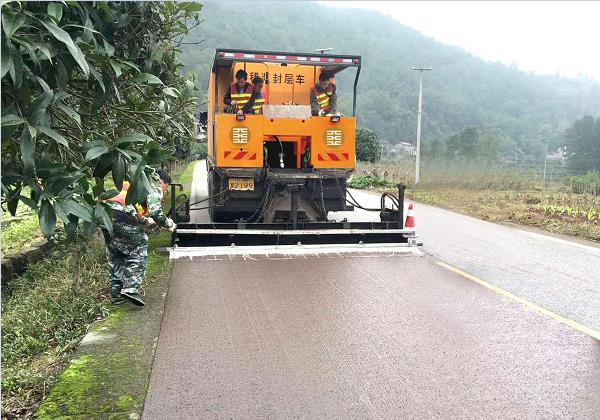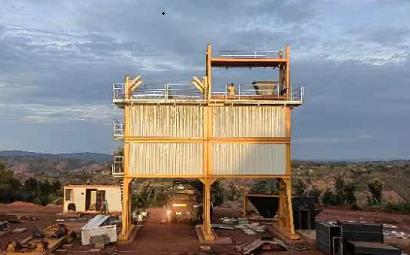The slurry seal specification mainly involves the requirements of the scope of application, construction preparation, construction operation process, quality control, etc. of the slurry seal. The following is a detailed summary of the slurry seal specification:
I. Scope of application
Slurry seal is mainly used in the following scenarios:
Preventive maintenance of existing highways and urban road pavements: improve the anti-skid performance of the road surface, block the infiltration of road surface water, prevent water damage to the road surface, and seal cracks with smaller widths.
The lower seal layer of the newly built highway: plays a role in water retention and health preservation for the semi-rigid base layer, strengthens the connection between the asphalt layer and the semi-rigid base layer, and avoids damage to the base layer by temporary passing vehicles.
The upper seal layer of the newly built and rebuilt highway and urban road pavement: used as a surface wear layer. Simple paving of county and township roads.
II. Construction preparation
Technical preparation: Be familiar with the construction process of slurry seal, provide technical training for construction personnel, and ensure that construction personnel can consciously construct in accordance with the specifications and control quality according to standards.
Equipment preparation: Prepare slurry seal paver (and calibrate), roller, air compressor, water truck, waste collection truck, shovel, rubber mop and other construction equipment.
Material preparation: Emulsified asphalt, mineral materials, fillers, water, additives and other materials should comply with the relevant provisions of the "Technical Specifications for Highway Asphalt Pavement Construction" and pass the inspection.
Working conditions: The base layer should be cleaned before construction, and there should be no water accumulation on the base layer. Construction is prohibited on rainy days. Workers should be familiar with the various processes of slurry seal construction and operate proficiently.

3. Construction operation process
Construction steps:
After cleaning the surface of the base layer, repair the potholes and fill the wider cracks first. Determine the number and width of paving according to the width of the road and the width of the paving trough, and draw the control line along the paving direction.
Drive the paver to the starting point of the construction and adjust the width, paving thickness and arch of the paving trough. After confirming that the settings of various materials are correct again, start the engine to rotate the mixer and the spiral distributor of the paving trough.
Turn on the control switch of each material so that each component material enters the mixer at the same time. Adjust the rotation direction of the spiral distributor so that the slurry mixture is evenly distributed in the paving trough. When the material fills the paving trough to about 1/2 of its depth, the operator signals the driver to start the paver and move forward at a speed of 1.5~3.0km/h. The paving speed should ensure that the volume of the mixture in the paving trough accounts for about 1/2 of the volume of the paving trough, and that the distributor can stir the mixture.
For local defects in the pavement after paving, manual repairs should be made in time, and tools such as rubber mops or shovels can be used.
Always pay attention to the use of each component material. When any material is close to being used up, the output of various materials should be immediately turned off. After all the mixture in the paving trough is spread out on the road surface, the paver stops moving. Construction personnel should immediately remove the materials within 2~4 meters of the last section of the construction and pour them into the waste truck. The paver truck drives to the side of the road, cleans the paving trough with a high-pressure water gun, then unloads the paving trough and drives to the material yard to load materials.
Joint treatment:
The horizontal joints of the slurry seal layer should be made into butt joints.
The longitudinal joints of the slurry seal layer should be made into lap joints. In order to ensure the flatness of the joints, the lap width should not be too large, and it is generally more appropriate to control it between 30 and 70 mm. The height of the joint should not be greater than 6 mm.
IV. Construction quality control
The raw materials should be inspected before construction, and there should be a qualified visa record.
The process flow and testing methods should be inspected during the construction process.
The content, frequency and standards of construction quality control should comply with relevant regulations. When the inspection results do not meet the specified requirements, the number of inspections should be added, the reasons should be found and dealt with.
Appearance quality requirements include: the surface is flat, straight, dense, solid and rough, there is no smooth phenomenon, no looseness, no scratches, no wheel marks, no cracks and local excess or less. The longitudinal and transverse joints are smooth and tight, and the color is uniform.
5. Finished product protection and safety and environmental protection measures
Finished product protection: Before construction, traffic control should be carried out on the section to be constructed to prevent vehicles from driving into the unformed slurry seal and causing damage. If necessary, fences, plastic sheets or woven bags can be used for covering and protection. Traffic can be opened only after the slurry seal is formed.
Safety measures: Before construction, traffic control should be carried out on the section to be constructed. Construction personnel must be equipped with labor protection supplies, and operators must undergo regular physical examinations. Transport vehicles entering the construction site should strictly control their speed and drive safely.
Environmental protection measures: The slurry seal mixture must not flow beyond the road surface, and the discarded materials must be collected in the waste truck. Measures should be taken to reduce noise pollution during night operations.
In summary, the slurry seal specification covers multiple aspects from the scope of application to construction preparation, construction operation process, quality control, finished product protection and safety and environmental protection measures, ensuring the quality and effect of slurry seal construction.
 Albanian
Albanian  Russian
Russian  Arabic
Arabic  Amharic
Amharic  Azerbaijani
Azerbaijani  Irish
Irish  Estonian
Estonian  Odia (Oriya)
Odia (Oriya)  Basque
Basque  Belarusian
Belarusian  Bulgarian
Bulgarian  Icelandic
Icelandic  Polish
Polish  Bosnian
Bosnian  Persian
Persian  Afrikaans
Afrikaans  Tatar
Tatar  Danish
Danish  German
German  French
French  Filipino
Filipino  Finnish
Finnish  Frisian
Frisian  Khmer
Khmer  Georgian
Georgian  Gujarati
Gujarati  Kazakh
Kazakh  Haitian Creole
Haitian Creole  Korean
Korean  Hausa
Hausa  Dutch
Dutch  Kyrgyz
Kyrgyz  Galician
Galician  Catalan
Catalan  Czech
Czech  Kannada
Kannada  Corsican
Corsican  Croatian
Croatian  Kurdish (Kurmanji)
Kurdish (Kurmanji)  Latin
Latin  Latvian
Latvian  Lao
Lao  Lithuanian
Lithuanian  Luxembourgish
Luxembourgish  Kinyarwanda
Kinyarwanda  Romanian
Romanian  Malagasy
Malagasy  Maltese
Maltese  Marathi
Marathi  Malayalam
Malayalam  Malay
Malay  Macedonian
Macedonian  Maori
Maori  Mongolian
Mongolian  Bengali
Bengali  Myanmar (Burmese)
Myanmar (Burmese)  Hmong
Hmong  Xhosa
Xhosa  Zulu
Zulu  Nepali
Nepali  Norwegian
Norwegian  Punjabi
Punjabi  Portuguese
Portuguese  Pashto
Pashto  Chichewa
Chichewa  Japanese
Japanese  Swedish
Swedish  Samoan
Samoan  Serbian
Serbian  Sesotho
Sesotho  Sinhala
Sinhala  Esperanto
Esperanto  Slovak
Slovak  Slovenian
Slovenian  Swahili
Swahili  Scots Gaelic
Scots Gaelic  Cebuano
Cebuano  Somali
Somali  Tajik
Tajik  Telugu
Telugu  Tamil
Tamil  Thai
Thai  Turkish
Turkish  Turkmen
Turkmen  Welsh
Welsh  Uyghur
Uyghur  Urdu
Urdu  Ukrainian
Ukrainian  Uzbek
Uzbek  Spanish
Spanish  Hebrew
Hebrew  Greek
Greek  Hawaiian
Hawaiian  Sindhi
Sindhi  Hungarian
Hungarian  Shona
Shona  Armenian
Armenian  Igbo
Igbo  Italian
Italian  Yiddish
Yiddish  Hindi
Hindi  Sundanese
Sundanese  Indonesian
Indonesian  Javanese
Javanese  Yoruba
Yoruba  Vietnamese
Vietnamese  Hebrew
Hebrew  Chinese (Simplified)
Chinese (Simplified)






